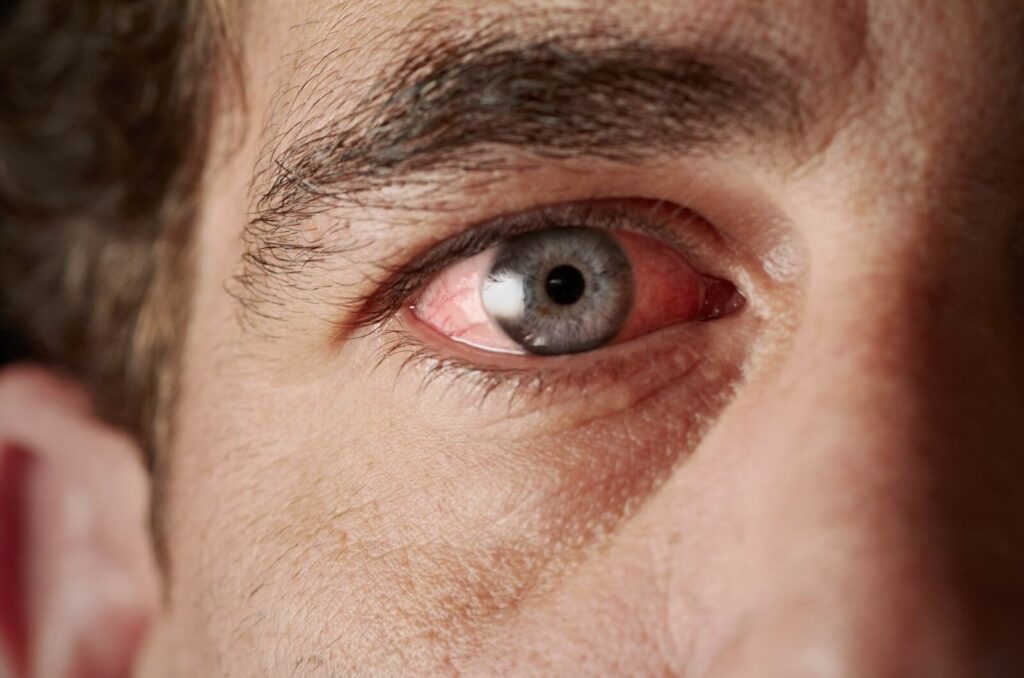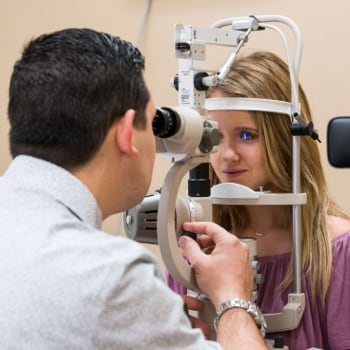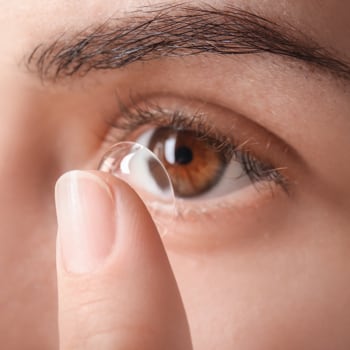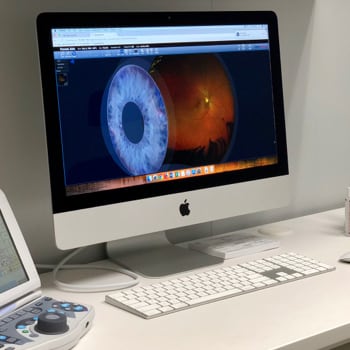Before you jump to conclusions and assume that you have pink eye, it’s essential to understand that several conditions can mimic the same set of symptoms. A few conditions commonly misdiagnosed as pink eye include:
- Allergies
- Styes
- Dry eye syndrome
- Blepharitis
- Uveitis
While it might not always be vision-threatening, misdiagnosis of pink eye can lead to improper treatment and prolonged discomfort. That’s why it’s essential to consult your eye doctor, especially if you’re experiencing persistent symptoms despite at-home remedies. They can examine your eyes, provide an accurate diagnosis, and offer tailored treatment advice.
Understanding Pink Eye (Conjunctivitis)
Pink eye is an inflammation of the conjunctiva, the thin, transparent membrane covering the white part of your eyeball and the inner eyelids. Bacterial or viral infections, allergens, or irritants can cause this condition.
Primary Symptoms of Pink Eye
Pink eye symptoms typically include:
- Redness in the white part of the eye
- Increased tear production
- Itchy or burning eyes
- Discharge that forms a crust overnight
- A gritty feeling in the eye
Why Accurate Diagnosis Matters
With so many conditions mimicking pink eye, an accurate diagnosis is crucial for effective treatment. Misdiagnosing can lead to ineffective treatment methods, unnecessary suffering, and the potential spread of the condition—depending on the cause of your case of pink eye. So, book an appointment with your eye doctor if you’re experiencing any uncomfortable symptoms or vision changes.
Conditions Commonly Mistaken for Pink Eye
Several conditions share similarities with pink eye symptoms but often require different treatment approaches—hence the importance of an accurate diagnosis.
Allergies
Although allergic conjunctivitis is a thing, your itchy, watery eyes might not be pink eye at all. Airborne allergens like pollen, pet dander, and dust mites can cause similar symptoms. Seasonal changes, especially during the spring and fall, often bring about these allergy symptoms.
Diagnostic Differences
Unlike pink eye, allergic reactions typically affect both eyes and are accompanied by other symptoms like sneezing, nasal congestion, and an itchy nose. Over-the-counter (OTC) antihistamines and eye drops can often alleviate these symptoms.
Styes
A stye (hordeolum) is a red, painful lump near the edge of your eyelid that looks like a boil or pimple. Symptoms include localized pain, swelling, and tenderness. Sometimes, the area may produce a small amount of pus.
Diagnostic Differences
Styes are usually caused by bacterial infection. Applying a warm compress several times daily can help speed up healing. Unlike pink eye, styes don’t typically cause widespread redness or discharge.

Dry Eye Syndrome
Dry eye syndrome occurs when your eyes can’t produce enough tears or your tears evaporate too quickly. Symptoms include dryness, burning, and a gritty sensation. Factors like aging, screen time, and certain medications can contribute to dry eyes.
Diagnostic Differences
Dry eye syndrome doesn’t typically involve redness or discharge without an underlying condition causing these symptoms. Artificial tears and lifestyle changes can often manage this condition.
An important note about dry eye is that you should involve your eye doctor if you’re experiencing persistent symptoms. Dry eye can be a chronic condition that requires ongoing symptom management if the root cause can’t be changed or identified. Your optometrist can offer tailored treatment and advice about what to do.
Blepharitis
Blepharitis is inflammation of the eyelids that causes red, itchy, and swollen eyelids. Although this condition is primarily due to inflammation, it can also be associated with bacterial infections, dandruff, or skin conditions like rosacea.
Diagnostic Differences
Blepharitis usually affects the eyelids more than the eye itself. Regular cleaning of the eyelids with a gentle cleanser can help manage this condition. Again, your optometrist can offer tailored advice on dealing with the inflammation if you’re experiencing ongoing blepharitis symptoms.
Uveitis
Uveitis is an inflammation of the uvea, the middle layer of the eye. Symptoms include eye redness, pain, light sensitivity, and blurred vision. It can result from infections, autoimmune disorders, or injuries.
Diagnostic Differences
The causes of uveitis are diverse and require an experienced eye doctor for an accurate diagnosis. Note that this condition is more serious than pink eye and requires immediate medical attention to prevent potential severe complications, including vision loss.
Tips for Self-Diagnosis
You should never entirely self-diagnose any medical conditions—eye-related or otherwise. But considering your symptoms, noting their onset, duration, or any other accompanying symptoms like fever or nasal congestion can help you decide how urgently you should book an exam with your eye doctor.
Regardless of what you think may be wrong, if your symptoms persist for more than a few days or worsen, it’s crucial to consult your optometrist.
Book an Appointment Today
Accurately diagnosing eye conditions can be challenging due to the overlapping symptoms of various diseases. But an experienced eye doctor understands the subtle differences between pink eye and its look-alikes.
Call our team at one of our Great Hills Eye Care locations today and book an appointment with one of our expert optometrists. We’re happy to discuss your symptoms and examine your eyes so we can provide tailored advice.














